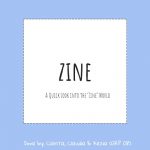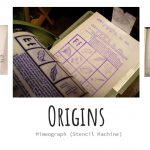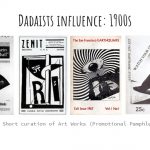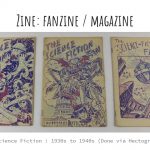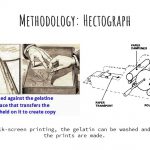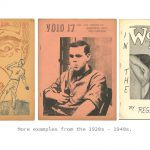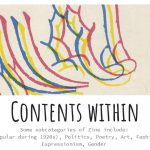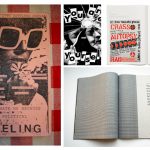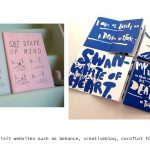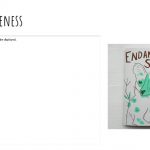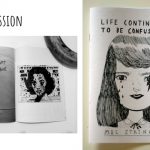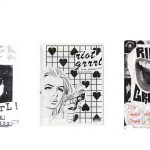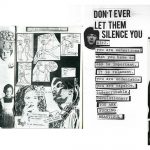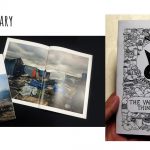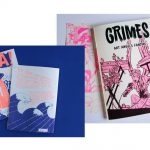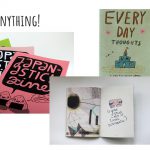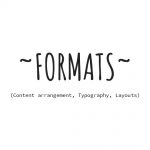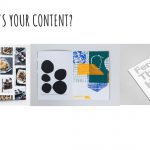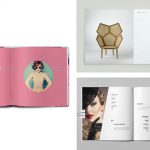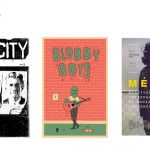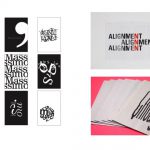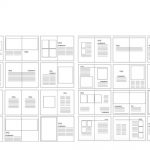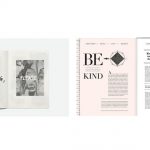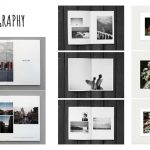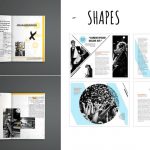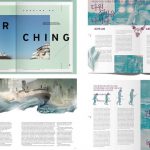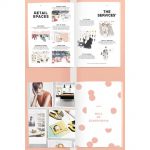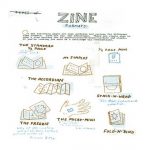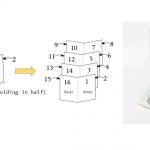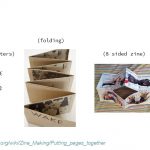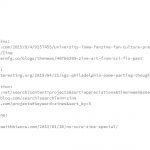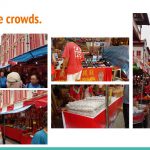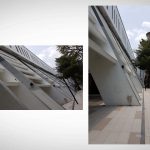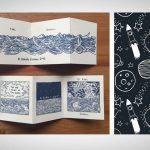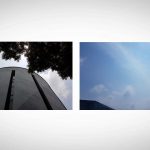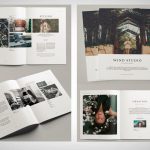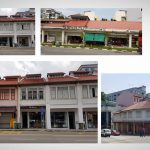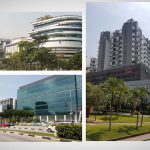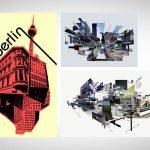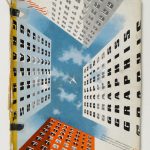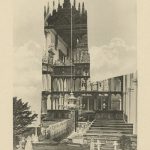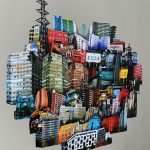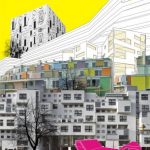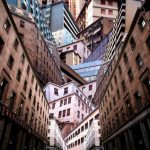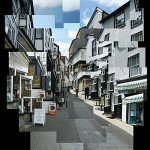Password: 4D
Monthly Archives: March 2017

Zine Presentation Slides
Done by: Calista, Claudia and Kezia

Guo Xi Article Discussion
(Above: Old Trees, Guo Xi, Source: China Online Museum)
Thoughts: The widely Artistic statement; or what was thought to be Guo Xi’s vision put into words, left behind during the flourishing era of the Northern Song Dynasty comprises of concepts that greatly dealt with the relation of nature and its harmony with mankind. It likened mankind’s behaviour to akin of the naturalistic mountains; the Chinese idiom of ‘There’s always a mountain higher than the other’, to how nobility ranking affected the imperial court.
Yet so, the artists then strive for a form of almost Utopia-like concept towards their depiction; if you were to observe more closely behind the intentions and symbols behind their understanding towards the landscapes. There were little to no chaos dated in the artworks themselves, and even when to which there are cases of Princes of other greater provinces paying respects to a Lord of higher rank, there was no form of humiliation; even when kowtowing to a man might be against the ‘face’ and pride of the high-ranking prince. It seems as though people were in harmony as much as nature is; where there’s a natural order of things (the mountains will always be bigger than the sizes of trees, and trees will always be larger than the average man); the respect and understanding of how mountains varied in appearance from the four seasons also further proved the need to depict the nature as it is, where by capturing the epitome of its heightened accuracy yet only opting to pick the most aesthetic elements from nature allowed them to remain true to their concept of wanting to remain as authentic as possible by making the picture have a stronger, slightly more minimalist approach rather than being too messy in the eye for the person to be able to effectively ‘go into the mood’ of the atmosphere.
It is also interesting to note that modern day knowledge of how nearer objects are characteristically recognised to be darker in colour due to the proximity of the eye, as compared to the higher shades of objects further away; were already used to depict the distance of the mountain in Guo Xi’s painting during the Northern Song period, showing great care on their part to ensure the level of accuracy in their works. Furthermore, mountains that are further away were also less detailed and more blurred in their depiction; similar to how it is viewed to the naked eye. Still, the understanding how larger mountains also served as the purpose to showing a more looming sense of presence, a larger figure and in a sense, creating a sense of intimidating and respect is also seen in the workings. The combination of such a technique alongside with the perspective continuing on behind seamlessly, prevalent to landscape works during the Northern Song period, eventually supports its way to the heavenly-like, elegant landscape akin to the deity realm. The floating, other-worldly notion is then, able to wind its way through to the viewer’s eyes.
The ethereal-like depiction, yet shows a remarkable understanding behind the purpose and concept of how lighting and shades work hand-in-hand together when it comes to the depiction of distances in relation to the mountains. With these tools, they strive to create and capture the intended mood of the moment, be it tranquillity or peace of any sorts. As quoted, painting should be done in a manner ‘ambitious yet not superfluous’. Attention is also paid to the smaller details, for smaller details can also sum up the bigger picture; in the case of how the mountain that is lacking in the presence of haze around them is akin to the the spring season without the coming and blooming of flowers amongst them. The respect and reverence towards the more highly regarded form of art, Chinese Poetry and Literature, has also left its mark over at the importance and weigh placed behind the brushstrokes used to depict the trees then. By notion of Chinese intellects then, the strength of the brush also lends weigh to the feelings of the artist then. A strong, wider brushstroke for stronger intentions, which was recognised widely by the Chinese to depict their emotions.
Proposal for Art History Essay (Week 10)
Feedback from last week (Important points to note):
1. Need a stronger, clearer claim: are you comparing the intentions behind the building of the tomb figures by the two rulers? If so, how are you planning to do this?
2. To improve on introduction by adding in contextual information and other main points to the supporting of the evidences, especially textual evidences.
3. To work the ideas to support the essay into the thesis and make it stronger. Look more into the terracotta warriors segment. AND not to abbreviate the Japanese.
TASK Peer review (Week 10): Introduction and two paragraphs with a point for peer review at tutorials.
Proposal #2 – Tentative Title: The
Tentative Claim:
The probable, similar intentions behind the creation of the clay Terracotta figures found in the First Emperor’s tomb and the Haniwa figures found in a Japanese Emperor’s tomb. (Namely Emperor Nintoku and Ojin during the Kofun period)
Edition #1:
The intentions behind the building and creation of the Terracotta figures in the First Emperor’s tomb and the Haniwa Figures found in Japanese Emperor Nintoku’s tomb are similar towards their purpose of serving the Emperor in their afterlife. It is a point of contention as seen from the crossing similarities and minute differences in their characteristics and histories, namely: the History behind the Holy, Deity-like Statuses the Emperors enjoy, their size and appearances, as well as the material intricacies the figurines themselves were made in. I believe that the life-size Terracotta warriors found in the burial mount in Lintong, Shanxi Province in China were every bit as valuable and important to the smaller, plains for the Haniwa figurines based in the suggested burial location over at Osaka Plains at the Daisen Kofun for Emperor Nintoku. It is essential to bear in mind that both Emperors were thought to be descendants of the heavens; to which the influence vastly affects the whole purpose behind the creation of the Haniwa figurines and Terracotta warriors respectively.
1. Holy statuses of the Emperors
2. Size and Appearances
3. Materials
> 3 supporting arguments (Condensed.)
1. Quantity and Placement of figurines
Japanese: More decorative and ornamental like trophies, rewarding of the general worthy of serving by emperor’s side previously. At entrances, like guards? Huge quantity of 11k in numbers at Nintoku’s grave; three mounts too. Reflects status.
Chinese: Servants, similar to ancient Egypt. Numerous, refer to history that they are used to replace live human sacrifices due to the lack of manpower. Even to the point there is almost a battalion like sequence to them. Coloured and intricate; best for the emperor? Lifelike since they represent real funerary goods.
2. Size and appearance
Japanese: Slightly smaller than life-styles, but realistic in its depiction of the samurai armour.
Chinese: Life-sized with varying expressions; have proven to be coloured but paint faded over time and erosion.
3. Materials
Japanese: Clay
Chinese: Terracotta

Project 1: Sights and Sounds of Singapore (Research)
Initial Research: I ventured into the hustle and bustle of the crowd-life during the peak of CNY preparation and was bombarded with much sounds, sight and smells. The place was very, very much alive. Hence, I got to work just getting information first in the nick of Chinatown and just collected what I could.
Collected and stashed what research I could, and picked out the more interesting ones. The first thing that struck me the strongest was definitely the sound aspect of the place, people yelling and promoting with all sorts of chatters. Might look into this area.
Proposal for Art History Essay (Wk 9)
Proposal for Art History Essay
Tentative Claim:
The probable, similar intentions behind the creation of the clay Terracotta figures found in the First Emperor’s tomb and the Haniwa figures found in a Japanese Emperor’s tomb. (Namely Emperor Nintoku and Ojin during the Kofun period)
Introduction: (Point-form)
Similar materials and similar creation techniques; the purpose behind these two mysterious figurines have always been debated back and forth. The terracotta warriors from the First Emperor’s tomb have always been largely accepted to be the replacement of live human sacrifices; whilst the origins and purpose of the Haniwa figures from Japanese Emperors have always been a mystery. Hypothetically, I propose that the similarities between the two figures from varying culture share an intimate relationship behind the intentions that the figures carries forth.
Plan for essay:
– Introduction (Claim)
> 3 supporting arguments (Condensed.)
1. Quantity and Placement of figurines
Jap: More decorative and ornamental like trophies, rewarding of the general worthy of serving by emperor’s side previously. At entrances, like guards? Huge quantity of 11k in numbers at Nintoku’s grave; three mounts too. Reflects status.
Chinese: Servants, similar to ancient Egypt. Numerous, refer to history that they are used to replace live human sacrifices due to the lack of manpower. Even to the point there is almost a battalion like sequence to them. Coloured and intricate; best for the emperor? Lifelike since they represent real funerary goods.
2. Size and appearance
Jap: Slightly smaller than life-styles, but realistic in its depiction of the samurai armour.
Chinese: Life-sized with varying expressions; have proven to be coloured but paint faded over time and erosion.
3. Materials
Jap: Clay
Chinese: Terracotta
Essay drafts:
Tentative bibliography:
1. Li Li. China’s Cultural Relics. Translated by Li Zhurun. People’s Republic of China: WuZhou Communication Press, 2004.
- Johnson, Hiroko. Haniwa. Encyclopedia of the Ancient World. United States of America: Salem Press Encyclopedia, 2001. Accessed March 13, 2017. http://eds.a.ebscohost.com.ezlibproxy1.ntu.edu.sg/eds/detail/detail?sid=4c3459f2-0168-43ed-ae4e-f39890201e31%40sessionmgr104&vid=4&hid=4110&bdata=JnNpdGU9ZWRzLWxpdmUmc2NvcGU9c2l0ZQ%3d%3d#db=ers&AN=89405842.
- Zhang Wenli. The Qin Terracotta Army: Treasures of Lintong. Translated by Li Tianshu, Du Qimei, Zhang Siying, and Chen Haiyan. Edited by Susan Whitfield. London: Scala Books, Cultural Relics Publishing House, 1996.
- Alain Thote, Martin Powers, David W. Pankenier, Eugene Wang, Anthony Barrieri-Low, Edward L. Shaughnessy, Kuang Yu Chen, Jenny F.So, Wang Hui, and Liu Yang. Beyond the First Emperor’s Mausoleum: New Perspectives on Qin Art. Edited by Liu Yang. USA: Books and Projects LLC, 2014.

Zine: Research (Location – Recce)
ZINE: Study in Paya Lebar
Theme: World Creation (Reinventing the Old and New)
‘Paya Lebar’ – Swamp Wide in Malay. Previously in the early 1800s during the colonial time, there were plantations and small Malay settlements during the area.
The estates’s heyday is mostly during the 1950s to 1980s, with 1970s of the area being infamous for the hideout of Secret Societies; though there are close to little traces of this part of its history left. It is interesting looking at the differences and mix between the cultures of the Chinese and the Malay. The oldest shop I managed to locate was an old Bread-making shop that denied photos, but still accepted a few interviews. It was with mirth that the old shop owner complained that their work was taken over by bigger, industrial ‘Breadtalk’.
I started out at Geylang Serai, moved along and simply snapped photos to gain more insight into the area. To which there is previously a Chinese and Malay Kampung Settlement; took photos and some notes. The food is heavenly though, especially the kuey tutu and various Malay snacks. I wanted to venture further, but I was wandering close to the edge of Paya Lebar and reaching Geyland instead. I saw some dubious stuff in daylight, though the general sense of safety and ease is still there. Especially the massage pallor and entrances to the smaller streets, went back into the white collared world soon after a quick food tour.
There are forms of textures and and patterns of various forms I observed then, as well as the deeply embedded culture into the location. There is an exceeding amount of strong, unique factory architectures in the area. Since there are a mix of such a wide variety, I figured it would be nice to combine all these small nuances into a pattern unique to Paya Lebar; somewhat collage style.
Precisely due to the factories, wide, clear skies are exposed to the eye frequently whilst walking through the various main roads and smaller streets. It would nice to compile it into a tight photo-book that skies in Singapore can be equally pretty as well; as the other countries; perhaps to visit during the sunset to see if the evening colours can be captured as well.
Nevertheless, the presence of unique architecture and building cannot be ignored as part of the intricacies of this growing, industrial estate. By collapsing all these buildings together, I thought of how interesting it would be to predict the future landscapes with what we have; to create a completely unique landscape with the more peculiar features of the factories at the industrial estate.
Technique: (Refer to Slide 10)
Purpose: Kind of like a personal sketchbook of combined buildings
Combine the details and uniqueness of the Old and New buildings, to show the possibilities of combining a new form of building in the future and an unique brand of the architecture together of Paya Lebar, Singapore.
Some possible style references:
I will be looking into the creating a personalised unique style; from the references of the world creation. It would be mostly collage-style, and possibly recreated from my own drawings. Then, create a blend of futuristic and olden world.
Some artists to look into:
– Graham Holland
– Giacomo Costa
– Krista Svalbonas
– David Hockney
– Jospeh Binder

Toilets: Our Shared Space – 4D Sound Project Research
To crf. to Lydia’s Post for details on Proposal #1 Summary:
- Floor Plans + Details
- Sample Task Sheet
We recce and surveyed the 2nd floor toilet and decided that the female toilet would be a more feasible location due to convenience of the location and gender inconveniences. It would probably be for the best that we cordon off usage of the toilet during the recording and participation of the activity (approx. 5 to 15 mins.).
The recording of the music and process will be documented and uploaded onto OSS to capture the experience for the participant’s viewing afterwards. The music piece will also be unique and special for that particular experience since the understanding of the tempo is to the interpretation of the reader of the instructions. (E.g. Knock on the Cubicle’s door in 4 beats, attempt to harmonise with the others.)
It is probably prudent for us to interfere as little as we can in the process as dictating as little things as possible in order to make the process as authentic as possible.
POTENTIAL ISSUES TO ADDRESS ON THE AGENDA
We came up with some possible, difficult scenarios/ situations that we would have to overcome:
- The Scale of the Project (Feasibility of squeezing the entire class into the performance all at once. AND if it will affect the rate/ grade of the experience.)
- If people are able to coordinate; and in either situation does it serve the experience that we are trying to bring across to the crowd. Would it be better to assign people roles? Or free-reign?
- Interest of the Crowd => How to capture one’s attention sufficiently enough for them to want to interact and participate in the activity? Esp. if the activity is taking a bit of coordination and time to work on.
- Is a Symphony achievable? Or is it a cacophony we are looking for?
- Is there a better way to present it? (Draw lots for roles?)
To check with second recce and a mini dry-run with the members; too many variables to come to a conclusive solution to the issues.
To-do List:
– Dry-run (With members)
– Mini Snippets of instructions on the various ‘instruments’ in the toilet. (Prints and laminated? Or at least waterproof.)
– Phone on stand-by for recording (Two?)
– Fix the rules and a procedure of how the project will work.
